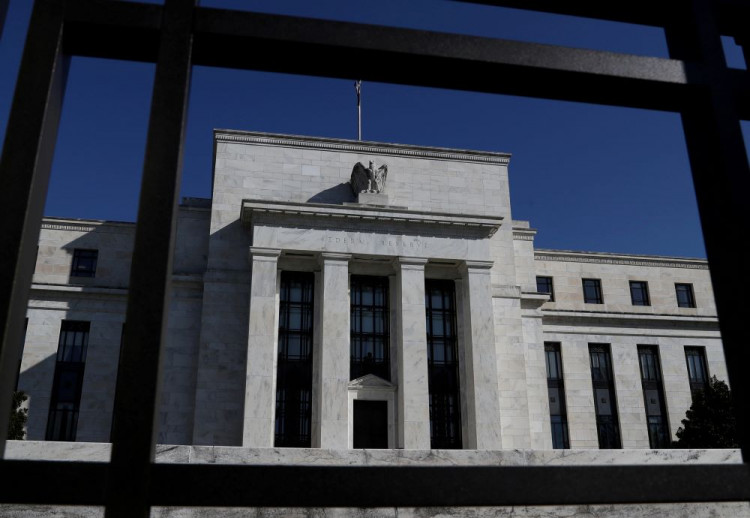The Federal Reserve recently confirmed plans to cut approximately 300 jobs by the end of this year. The reductions will come in the form of layoffs, early retirements, and not filling vacant positions. The cuts will primarily target support roles, including obsolete tech positions.
This small-scale downsizing is the first in 13 years. The Federal Reserve system, consisting of 12 regional reserve banks, a board based in Washington, D.C., and three smaller units, employs about 21,000 people. The planned cuts represent about 1% of its workforce.
The timing of the layoffs is sensitive for the Fed, which has been operating at a loss for the past year. However, analysts suggest that the cuts aren't directly tied to these losses but are more about the institution adjusting its operations in response to changing economic conditions.
Post-Expansion Contraction
The cuts seem to be a move to streamline the organization in line with economic trends. The Fed spokesperson indicated that the reductions are mainly in support roles and some no longer needed IT positions. This includes roles made redundant by the rise of cloud computing and positions related to the Fed's payment processing systems, which are currently being integrated.
The Fed has downsized before. In the first decade of this century, the total number of jobs in the Federal Reserve system declined from nearly 24,000 in 2003 to 19,735 in 2010. This was mainly due to the end of the paper check era, leading to significant staff reductions.
However, after the 2008 financial crisis, the Fed's responsibilities expanded. Congress has been pushing for modernization of the central bank, broadening its role in payment processing and granting it new powers related to financial stability. This has led to the Fed's growing influence in the economic sector, expanding its regulatory scope, and hiring more staff over the past decade.
Recently, some Republicans in Congress have started scrutinizing the Fed's operations, expressing concerns about its deep dives into issues like climate change and economic inequality. They believe these topics seem to go beyond the Fed's mandate of monetary policy and bank regulation.
Hints of the layoffs were given in advance. In last year's annual report and financial documents, the Fed stated plans to reduce its budgeted staff by over 500 between 2022 and 2023. However, a memo from last December indicated that actual employment in 2022 was below budget, with a higher-than-expected turnover rate and longer delays in filling vacancies, especially in bank regulation. As a result, the number of positions cut that year was slightly less than budgeted.
Significant Losses
The Fed has been operating at a loss for a year, and the deficit continues to grow. Last September, the Fed's net profit turned negative. According to data released on September 14, the Fed's losses have surpassed $100 billion.
Observers note that while losses at the Fed are rare, they were expected. The deficit reflects the interest the Fed pays on bank reserves, which is higher than the interest it earns from holding bonds and providing services to the financial sector. The reason is the rising interest costs from continuous rate hikes. Over the past 18 months, the Fed has raised rates 11 times, with the benchmark overnight rate rising from near zero in March 2022 to the current range of 5.25%-5.50%.
However, these losses are only on paper and won't impact the institution's ability to implement policies or force layoffs. Unlike other federal agencies funded by taxpayer money, the Fed is self-funded. Its revenue comes from earnings on its assets and fees charged to banks. The entire system's annual expenses are about $6.3 billion. In most years, the Fed turns a profit and remits money to the Treasury.
In fact, the expectation is that the Fed's losses will continue to grow. William English, a former senior Fed employee now at Yale University, predicts that by 2025, the Fed's losses will peak at around $200 billion. Derek Tang of Washington forecasting firm LH Meyer estimates that next year, the losses could rise to between $150 billion and $200 billion.
Last week, the Fed chose not to raise interest rates at its latest meeting but remains vigilant, ready to take further action to curb inflation if necessary. This has left investors still concerned about rising bond yields and long-term interest rates. The S&P 500 index has fallen about 4% so far in September, on track for its second consecutive monthly decline and its worst monthly drop in 2023.
On Monday, U.S. stocks continued their decline, with major bond yields spiking again to 4.527%. Meanwhile, the two-year Treasury yield reached its highest level since 2006, hitting 5.129%. However, the three major U.S. stock indices rebounded at the close, ending a four-day losing streak.
Higher interest rates have also raised concerns about an impending economic recession. Economists at the New York Fed predict a 61% chance of the U.S. entering a recession by next August.






